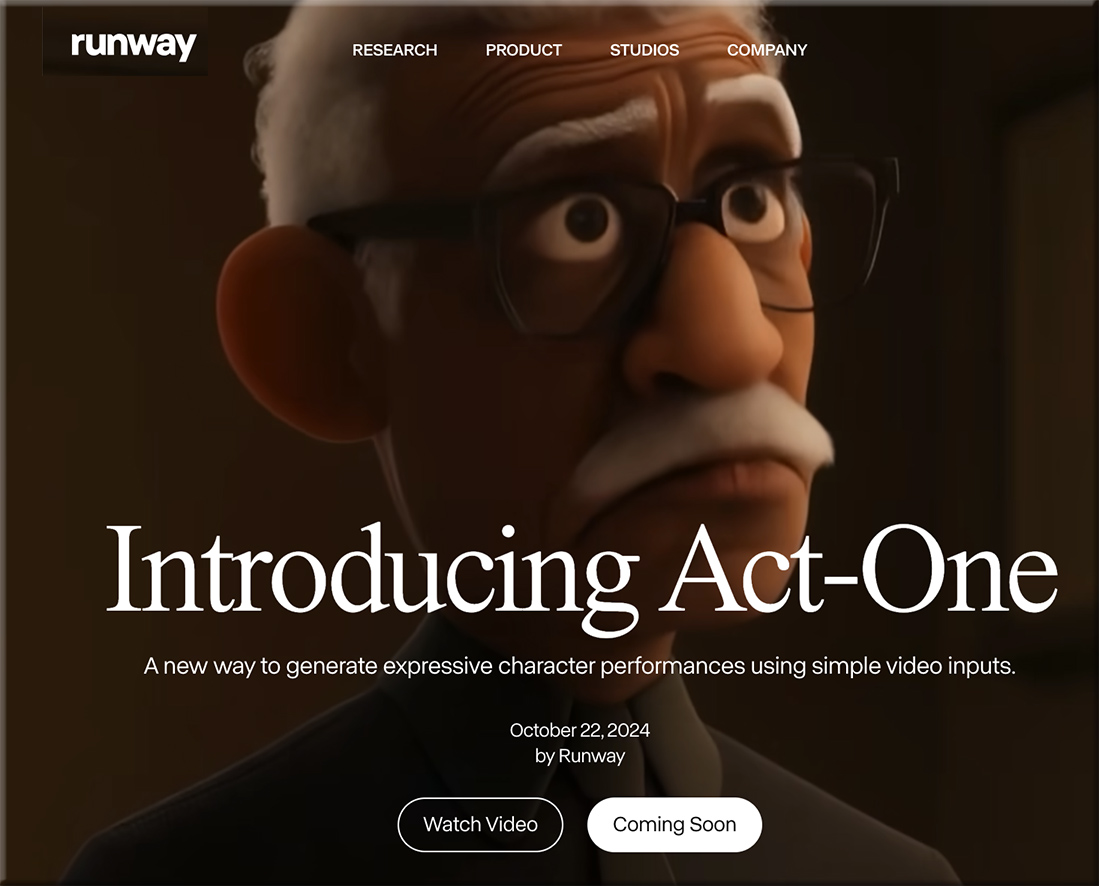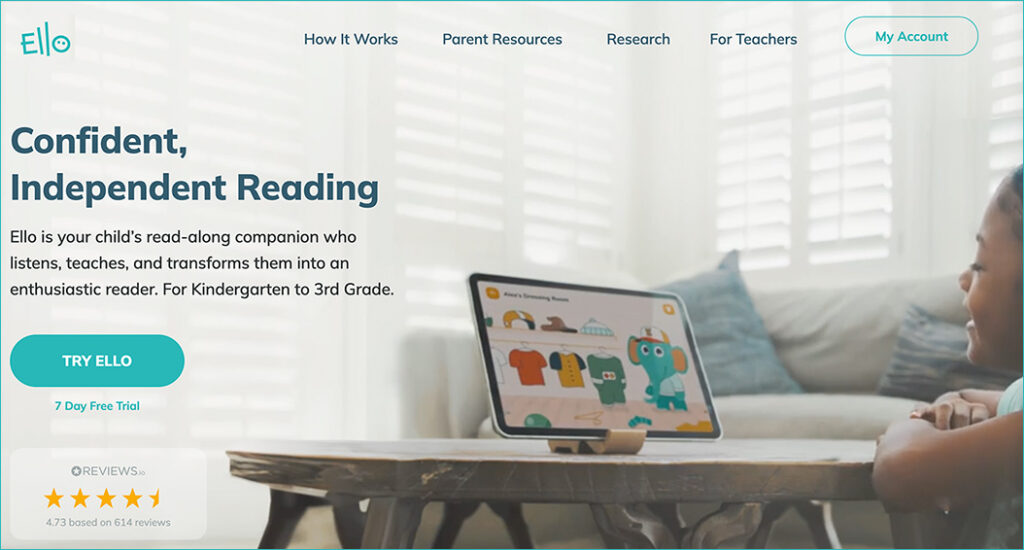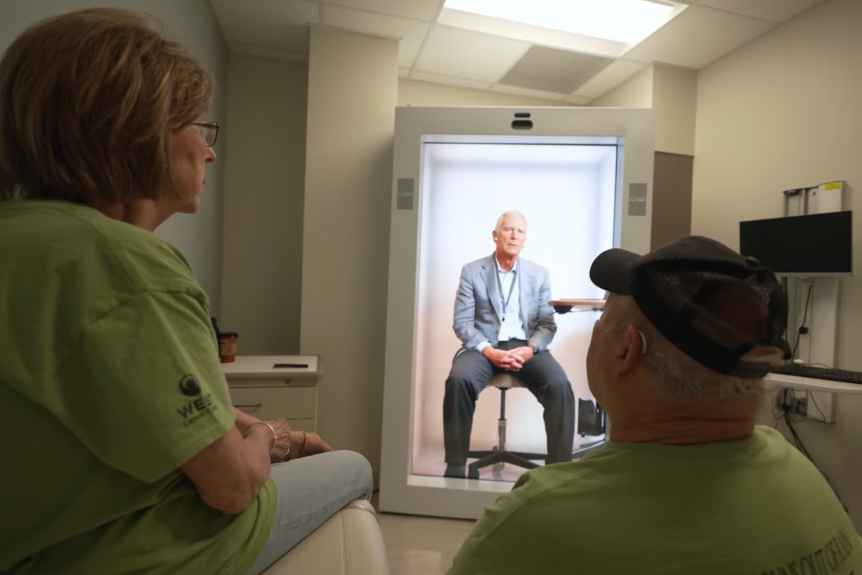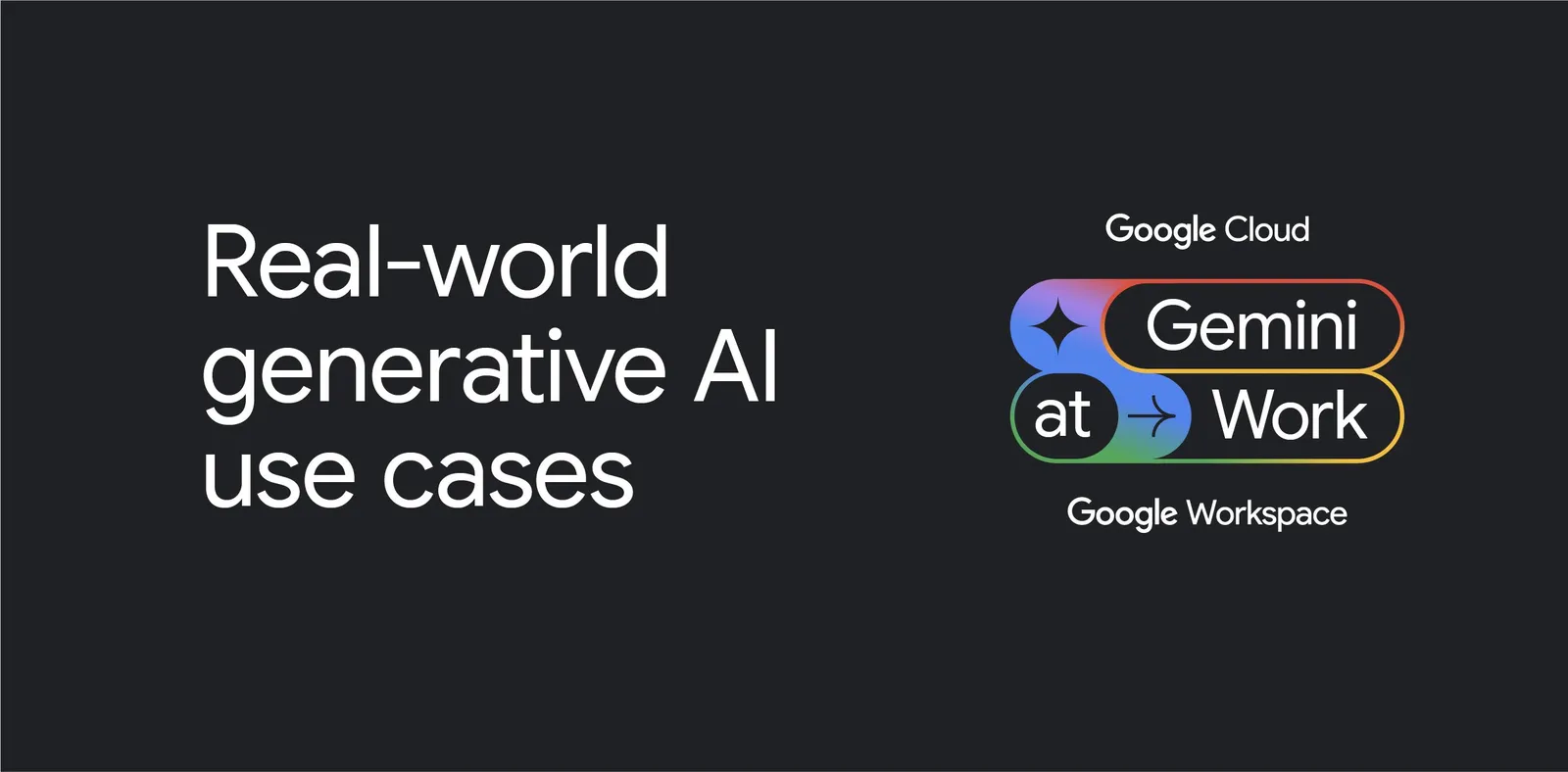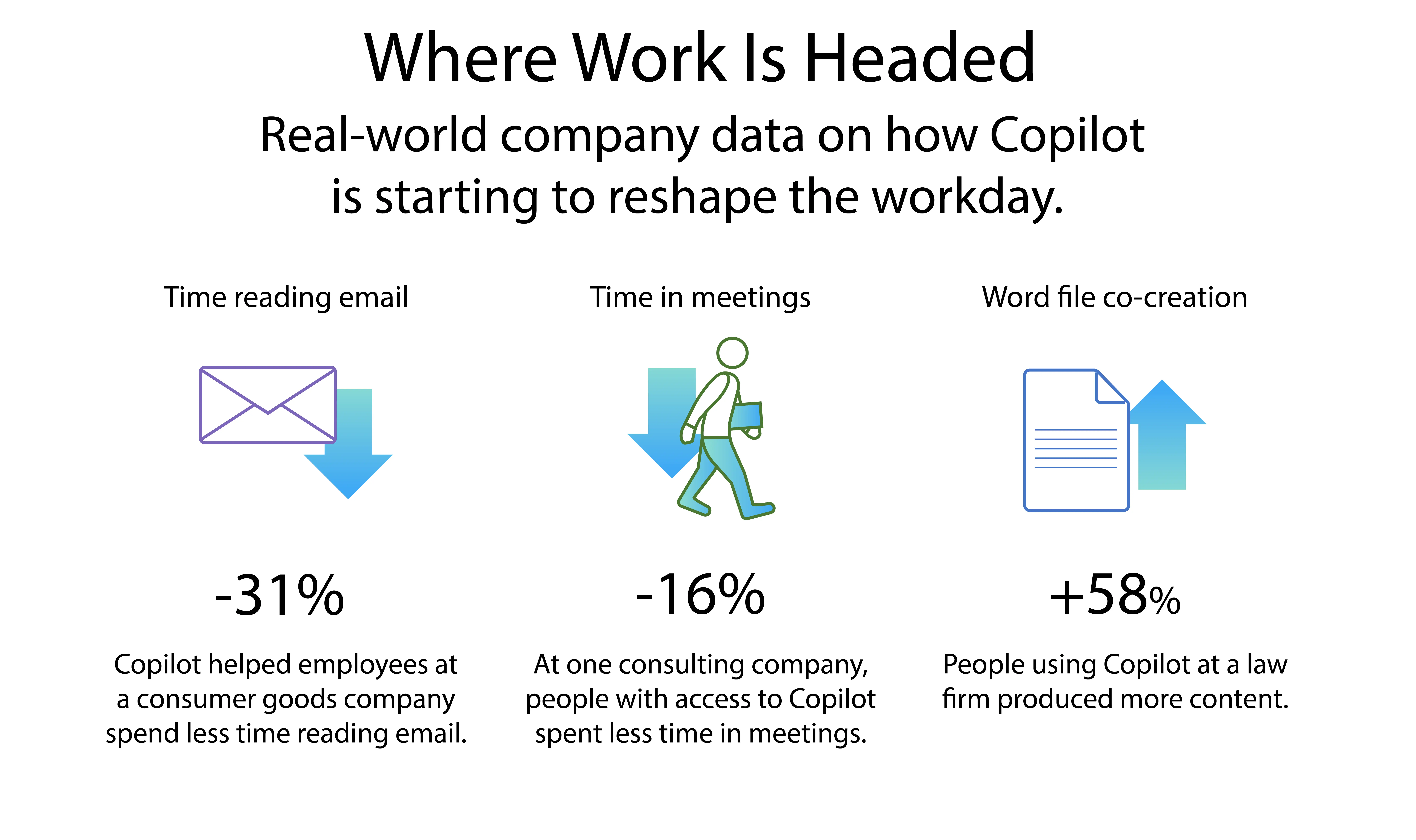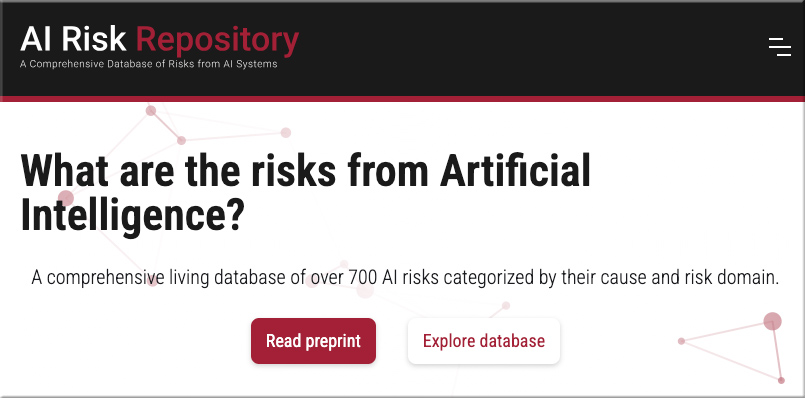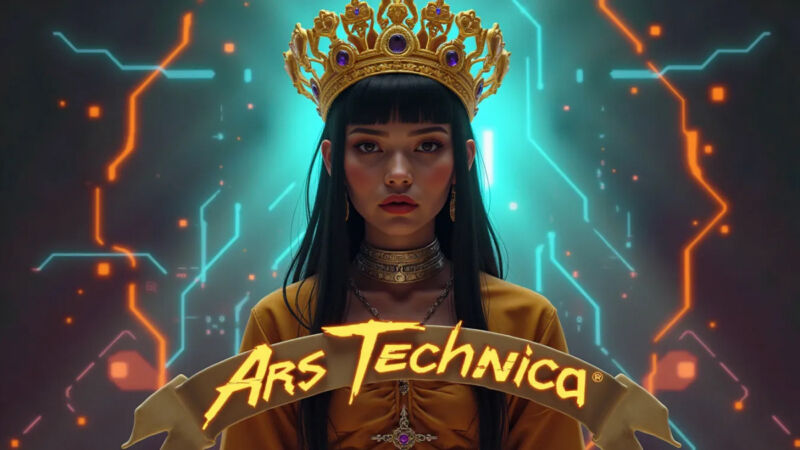Career Cluster Appendix — from gettingsmart.com
New technology, global challenges and initiatives point to new pathways and new opportunities in our economies career clusters. The following resources highlight exemplars, entrepreneurial opportunities and high schools who are leading the way in pathway development and implementation.
AI-governed robots can easily be hacked — from theaivalley.com by Barsee
PLUS: Sam Altman’s new company “World” introduced…
In a groundbreaking study, researchers from Penn Engineering showed how AI-powered robots can be manipulated to ignore safety protocols, allowing them to perform harmful actions despite normally rejecting dangerous task requests.
What did they find ?
- Researchers found previously unknown security vulnerabilities in AI-governed robots and are working to address these issues to ensure the safe use of large language models(LLMs) in robotics.
- Their newly developed algorithm, RoboPAIR, reportedly achieved a 100% jailbreak rate by bypassing the safety protocols on three different AI robotic systems in a few days.
- Using RoboPAIR, researchers were able to manipulate test robots into performing harmful actions, like bomb detonation and blocking emergency exits, simply by changing how they phrased their commands.
Why does it matter?
This research highlights the importance of spotting weaknesses in AI systems to improve their safety, allowing us to test and train them to prevent potential harm.
From DSC:
Great! Just what we wanted to hear. But does it surprise anyone? Even so…we move forward at warp speeds.

From DSC:
So, given the above item, does the next item make you a bit nervous as well? I saw someone on Twitter/X exclaim, “What could go wrong?” I can’t say I didn’t feel the same way.
Introducing computer use, a new Claude 3.5 Sonnet, and Claude 3.5 Haiku — from anthropic.com
We’re also introducing a groundbreaking new capability in public beta: computer use. Available today on the API, developers can direct Claude to use computers the way people do—by looking at a screen, moving a cursor, clicking buttons, and typing text. Claude 3.5 Sonnet is the first frontier AI model to offer computer use in public beta. At this stage, it is still experimental—at times cumbersome and error-prone. We’re releasing computer use early for feedback from developers, and expect the capability to improve rapidly over time.
Per The Rundown AI:
The Rundown: Anthropic just introduced a new capability called ‘computer use’, alongside upgraded versions of its AI models, which enables Claude to interact with computers by viewing screens, typing, moving cursors, and executing commands.
…
Why it matters: While many hoped for Opus 3.5, Anthropic’s Sonnet and Haiku upgrades pack a serious punch. Plus, with the new computer use embedded right into its foundation models, Anthropic just sent a warning shot to tons of automation startups—even if the capabilities aren’t earth-shattering… yet.
Also related/see:
- What is Anthropic’s AI Computer Use? — from ai-supremacy.com by Michael Spencer
Task automation, AI at the intersection of coding and AI agents take on new frenzied importance heading into 2025 for the commercialization of Generative AI. - New Claude, Who Dis? — from theneurondaily.com
Anthropic just dropped two new Claude models…oh, and Claude can now use your computer. - When you give a Claude a mouse — from oneusefulthing.org by Ethan Mollick
Some quick impressions of an actual agent
Introducing Act-One — from runwayml.com
A new way to generate expressive character performances using simple video inputs.
What makes Act-One special? It can capture the soul of an actor’s performance using nothing but a simple video recording. No fancy motion capture equipment, no complex face rigging, no army of animators required. Just point a camera at someone acting, and watch as their exact expressions, micro-movements, and emotional nuances get transferred to an AI-generated character.
Think about what this means for creators: you could shoot an entire movie with multiple characters using just one actor and a basic camera setup. The same performance can drive characters with completely different proportions and looks, while maintaining the authentic emotional delivery of the original performance. We’re witnessing the democratization of animation tools that used to require millions in budget and years of specialized training.
Also related/see:
Introducing, Act-One. A new way to generate expressive character performances inside Gen-3 Alpha using a single driving video and character image. No motion capture or rigging required.
Learn more about Act-One below.
(1/7) pic.twitter.com/p1Q8lR8K7G
— Runway (@runwayml) October 22, 2024
Google to buy nuclear power for AI datacentres in ‘world first’ deal — from theguardian.com
Tech company orders six or seven small nuclear reactors from California’s Kairos Power
Google has signed a “world first” deal to buy energy from a fleet of mini nuclear reactors to generate the power needed for the rise in use of artificial intelligence.
The US tech corporation has ordered six or seven small nuclear reactors (SMRs) from California’s Kairos Power, with the first due to be completed by 2030 and the remainder by 2035.
Related:
ChatGPT Topped 3 Billion Visits in September — from similarweb.com
After the extreme peak and summer slump of 2023, ChatGPT has been setting new traffic highs since May
ChatGPT has been topping its web traffic records for months now, with September 2024 traffic up 112% year-over-year (YoY) to 3.1 billion visits, according to Similarweb estimates. That’s a change from last year, when traffic to the site went through a boom-and-bust cycle.
Crazy “AI Army” — from aisecret.us
Also from aisecret.us, see World’s First Nuclear Power Deal For AI Data Centers
Google has made a historic agreement to buy energy from a group of small nuclear reactors (SMRs) from Kairos Power in California. This is the first nuclear power deal specifically for AI data centers in the world.
New updates to help creators build community, drive business, & express creativity on YouTube — from support.google.com
Hey creators!
Made on YouTube 2024 is here and we’ve announced a lot of updates that aim to give everyone the opportunity to build engaging communities, drive sustainable businesses, and express creativity on our platform.
Below is a roundup with key info – feel free to upvote the announcements that you’re most excited about and subscribe to this post to get updates on these features! We’re looking forward to another year of innovating with our global community it’s a future full of opportunities, and it’s all Made on YouTube!
New autonomous agents scale your team like never before — from blogs.microsoft.com
Today, we’re announcing new agentic capabilities that will accelerate these gains and bring AI-first business process to every organization.
- First, the ability to create autonomous agents with Copilot Studio will be in public preview next month.
- Second, we’re introducing ten new autonomous agents in Dynamics 365 to build capacity for every sales, service, finance and supply chain team.
10 Daily AI Use Cases for Business Leaders— from flexos.work by Daan van Rossum
While AI is becoming more powerful by the day, business leaders still wonder why and where to apply today. I take you through 10 critical use cases where AI should take over your work or partner with you.
Multi-Modal AI: Video Creation Simplified — from heatherbcooper.substack.com by Heather Cooper
Emerging Multi-Modal AI Video Creation Platforms
The rise of multi-modal AI platforms has revolutionized content creation, allowing users to research, write, and generate images in one app. Now, a new wave of platforms is extending these capabilities to video creation and editing.
Multi-modal video platforms combine various AI tools for tasks like writing, transcription, text-to-voice conversion, image-to-video generation, and lip-syncing. These platforms leverage open-source models like FLUX and LivePortrait, along with APIs from services such as ElevenLabs, Luma AI, and Gen-3.
AI Medical Imagery Model Offers Fast, Cost-Efficient Expert Analysis — from developer.nvidia.com/
10 ChatGPT prompts to extract everything from a book: pic.twitter.com/zzn4NrWu4l
— Farhan (@mhdfaran) October 12, 2024
Articulate AI & the “Buttonification” of Instructional Design — from drphilippahardman.substack.com by Dr. Philippa Hardman
A new trend in AI-UX, and its implications for Instructional Design
1. Using AI to Scale Exceptional Instructional Design Practice
Imagine a bonification system that doesn’t just automate tasks, but scales best practices in instructional design:
- Evidence-Based Design Button…
- Learner-Centered Objectives Generator…
Engagement Optimiser…
2. Surfacing AI’s Instructional Design Thinking
Instead of hiding AI’s decision-making process, what if we built an AI system which invites instructional designers to probe, question, and learn from an expert trained AI?
- Explain This Design…
- Show Me Alternatives…
- Challenge My Assumptions…
- Learning Science Insights…
By reimagining the role of AI in this way, we would…
Recapping OpenAI’s Education Forum — from marcwatkins.substack.com by Marc Watkins
OpenAI’s Education Forum was eye-opening for a number of reasons, but the one that stood out the most was Leah Belsky acknowledging what many of us in education had known for nearly two years—the majority of the active weekly users of ChatGPT are students. OpenAI has internal analytics that track upticks in usage during the fall and then drops off in the spring. Later that evening, OpenAI’s new CFO, Sarah Friar, further drove the point home with an anecdote about usage in the Philippines jumping nearly 90% at the start of the school year.
I had hoped to gain greater insight into OpenAI’s business model and how it related to education, but the Forum left me with more questions than answers. What app has the majority of users active 8 to 9 months out of the year and dormant for the holidays and summer breaks? What business model gives away free access and only converts 1 out of every 20-25 users to paid users? These were the initial thoughts that I hoped the Forum would address. But those questions, along with some deeper and arguably more critical ones, were skimmed over to drive home the main message of the Forum—Universities have to rapidly adopt AI and become AI-enabled institutions.
Off-Loading in the Age of Generative AI — from insidehighered.com by James DeVaney
As we embrace these technologies, we must also consider the experiences we need to discover and maintain our connections—and our humanity. In a world increasingly shaped by AI, I find myself asking: What are the experiences that define us, and how do they influence the relationships we build, both professionally and personally?
This concept of “off-loading” has become central to my thinking. In simple terms, off-loading is the act of delegating tasks to AI that we would otherwise do ourselves. As AI systems advance, we’re increasingly confronted with a question: Which tasks should we off-load to AI?
How to do school with NotebookLM:
1. Record audio from class on your phone
2. Keep laptop closed. Just jot down short phrases to describe most important points
3. Upload audio and PDF scan of notes to NotebookLM
4. Ask Notebook to expand your notes with details from recording… pic.twitter.com/wfmCTJfRba— Steven Johnson (@stevenbjohnson) September 26, 2024
Unlock deeper insights with NotebookLM: Now analyze YouTube videos & audio files alongside your docs. Plus, easily share your Audio Overview with a new sharing option!
Learn more: https://t.co/j1da9565aZ pic.twitter.com/9sULXX5Jud
— labs.google (@labsdotgoogle) September 26, 2024
According to Notebook LM on this Future U podcast — Searching for Fit: The Impacts of AI in Higher Ed — here are some excerpts from the generated table of contents:
Part 1: Setting the Stage
I. Introduction (0:00 – 6:16): …
II. Historical Contextualization (6:16 – 11:30): …
III. The Role of Product Fit in AI’s Impact (11:30 – 17:10): …
IV. AI and the Future of Knowledge Work (17:10 – 24:03): …
V. Teaching About AI in Higher Ed: A Measured Approach (24:03 – 34:20): …
VI. AI & the Evolving Skills Landscape (34:20 – 44:35): …
VII. Ethical & Pedagogical Considerations in an AI-Driven World (44:35 – 54:03):…
VIII. AI Beyond the Classroom: Administrative Applications & the Need for Intuition (54:03 – 1:04:30): …
IX. Reflections & Future Directions (1:04:30 – 1:11:15): ….
Part 2: Administrative Impacts & Looking Ahead
X. Bridging the Conversation: From Classroom to Administration (1:11:15 – 1:16:45): …
XI. The Administrative Potential of AI: A Looming Transformation (1:16:45 – 1:24:42): …
XII. The Need for Intuitiveness & the Importance of Real-World Applications (1:24:42 – 1:29:45): …
XIII. Looking Ahead: From Hype to Impactful Integration (1:29:45 – 1:34:25): …
XIV. Conclusion and Call to Action (1:34:25 – 1:36:03): …
The future of language learning — from medium.com by Sami Tatar
Most language learners do not have access to affordable 1:1 tutoring, which is also proven to be the most effective way to learn (short of moving to a specific country for complete immersion). Meanwhile, language learning is a huge market, and with an estimated 60% of this still dominated by “offline” solutions, meaning it is prime for disruption and never more so than with the opportunities unlocked through AI powered language learning. Therefore — we believe this presents huge opportunities for new startups creating AI native products to create the next language learning unicorns.
I never imagined I’d learn so much without paying for a course.
Here are 8 ChatGPT-4 prompts I wish I’d found sooner: pic.twitter.com/b9gqEGInSd
— Ryan Hart ? (@thisdudelikesAI) October 5, 2024
“The Broken Mirror: Rethinking Education, AI, and Equity in America’s Classrooms” — from nickpotkalitsky.substack.com by JC Price
It’s not that AI is inherently biased, but in its current state, it favors those who can afford it. The wealthy districts continue to pull ahead, leaving schools without resources further behind. Students in these underserved areas aren’t just being deprived of technology—they’re being deprived of the future.
But imagine a different world—one where AI doesn’t deepen the divide, but helps to bridge it. Technology doesn’t have to be the luxury of the wealthy. It can be a tool for every student, designed to meet them where they are. Adaptive AI systems, integrated into schools regardless of their budget, can provide personalized learning experiences that help students catch up and push forward, all while respecting the limits of their current infrastructure. This is where AI’s true potential lies—not in widening the gap, but in leveling the field.
But imagine if, instead of replacing teachers, AI helped to support them. Picture a world where teachers are freed from the administrative burdens that weigh them down. Where AI systems handle the logistics, so teachers can focus on what they do best—teaching, mentoring, and inspiring the next generation. Professional development could be personalized, helping teachers integrate AI into their classrooms in ways that enhance their teaching, without adding to their workload. This is the future we should be striving toward—one where technology serves to lift up educators, not push them out.
Employers Say Students Need AI Skills. What If Students Don’t Want Them? — from insidehighered.com by Ashley Mowreader
Colleges and universities are considering new ways to incorporate generative AI into teaching and learning, but not every student is on board with the tech yet. Experts weigh in on the necessity of AI in career preparation and higher education’s role in preparing students for jobs of the future.
Among the 5,025-plus survey respondents, around 2 percent (n=93), provided free responses to the question on AI policy and use in the classroom. Over half (55) of those responses were flat-out refusal to engage with AI. A few said they don’t know how to use AI or are not familiar with the tool, which impacts their ability to apply appropriate use to coursework.
But as generative AI becomes more ingrained into the workplace and higher education, a growing number of professors and industry experts believe this will be something all students need, in their classes and in their lives beyond academia.
From DSC:
I used to teach a Foundations of Information Technology class. Some of the students didn’t want to be there as they began the class, as it was a required class for non-CS majors. But after seeing what various applications and technologies could do for them, a good portion of those same folks changed their minds. But not all. Some students (2% sounds about right) asserted that they would never use technologies in their futures. Good luck with that I thought to myself. There’s hardly a job out there that doesn’t use some sort of technology.
And I still think that today — if not more so. If students want good jobs, they will need to learn how to use AI-based tools and technologies. I’m not sure there’s much of a choice. And I don’t think there’s much of a choice for the rest of us either — whether we’re still working or not.
So in looking at the title of the article — “Employers Say Students Need AI Skills. What If Students Don’t Want Them?” — those of us who have spent any time working within the world of business already know the answer.
#Reinvent #Skills #StayingRelevant #Surviving #Workplace + several other categories/tags apply.
For those folks who have tried AI:
Skills: However, genAI may also be helpful in building skills to retain a job or secure a new one. People who had used genAI tools were more than twice as likely to think that these tools could help them learn new skills that may be useful at work or in locating a new job. Specifically, among those who had not used genAI tools, 23 percent believed that these tools might help them learn new skills, whereas 50 percent of those who had used the tools thought they might be helpful in acquiring useful skills (a highly statistically significant difference, after controlling for demographic traits).
Duolingo Introduces AI-Powered Innovations at Duocon 2024 — from investors.duolingo.com; via Claire Zau
Duolingo’s new Video Call feature represents a leap forward in language practice for learners. This AI-powered tool allows Duolingo Max subscribers to engage in spontaneous, realistic conversations with Lily, one of Duolingo’s most popular characters. The technology behind Video Call is designed to simulate natural dialogue and provides a personalized, interactive practice environment. Even beginner learners can converse in a low-pressure environment because Video Call is designed to adapt to their skill level. By offering learners the opportunity to converse in real-time, Video Call builds the confidence needed to communicate effectively in real-world situations. Video Call is available for Duolingo Max subscribers learning English, Spanish, and French.
And here’s another AI-based learning item:
AI reading coach startup Ello now lets kids create their own stories — from techcrunch.com by Lauren Forristal; via Claire Zau
Ello, the AI reading companion that aims to support kids struggling to read, launched a new product on Monday that allows kids to participate in the story-creation process.
Called “Storytime,” the new AI-powered feature helps kids generate personalized stories by picking from a selection of settings, characters, and plots. For instance, a story about a hamster named Greg who performed in a talent show in outer space.
Voice and Trust in Autonomous Learning Experiences — from learningguild.com by Bill Brandon
This article seeks to apply some lessons from brand management to learning design at a high level. Throughout the rest of this article, it is essential to remember that the context is an autonomous, interactive learning experience. The experience is created adaptively by Gen AI or (soon enough) by agents, not by rigid scripts. It may be that an AI will choose to present prewritten texts or prerecorded videos from a content library according to the human users’ responses or questions. Still, the overall experience will be different for each user. It will be more like a conversation than a book.
…
In summary, while AI chatbots have the potential to enhance learning experiences, their acceptance and effectiveness depend on several factors, including perceived usefulness, ease of use, trust, relational factors, perceived risk, and enjoyment.Personalization and building trust are essential for maintaining user engagement and achieving positive learning outcomes. The right “voice” for autonomous AI or a chatbot can enhance trust by making interactions more personal, consistent, and empathetic.
Walt Disney’s Wisdom: Lessons for Learning & Development Leaders — from learningguild.com by David Kelly
Here are a few of my favorite [quotes], along with the valuable lessons they offer us in Learning and Development.
- “Everyone has deadlines.”
- “I believe in being an innovator.”
- “Times and conditions change so rapidly that we must keep our aim constantly focused on the future.
- “I can never stand still. I must explore and experiment.”
- …and several other quotes.
AI’s Trillion-Dollar Opportunity — from bain.com by David Crawford, Jue Wang, and Roy Singh
The market for AI products and services could reach between $780 billion and $990 billion by 2027.
At a Glance
- The big cloud providers are the largest concentration of R&D, talent, and innovation today, pushing the boundaries of large models and advanced infrastructure.
- Innovation with smaller models (open-source and proprietary), edge infrastructure, and commercial software is reaching enterprises, sovereigns, and research institutions.
- Commercial software vendors are rapidly expanding their feature sets to provide the best use cases and leverage their data assets.
Accelerated market growth. Nvidia’s CEO, Jensen Huang, summed up the potential in the company’s Q3 2024 earnings call: “Generative AI is the largest TAM [total addressable market] expansion of software and hardware that we’ve seen in several decades.”
And on a somewhat related note (i.e., emerging technologies), also see the following two postings:
Surgical Robots: Current Uses and Future Expectations — from medicalfuturist.com by Pranavsingh Dhunnoo
As the term implies, a surgical robot is an assistive tool for performing surgical procedures. Such manoeuvres, also called robotic surgeries or robot-assisted surgery, usually involve a human surgeon controlling mechanical arms from a control centre.
Key Takeaways
- Robots’ potentials have been a fascination for humans and have even led to a booming field of robot-assisted surgery.
- Surgical robots assist surgeons in performing accurate, minimally invasive procedures that are beneficial for patients’ recovery.
- The assistance of robots extend beyond incisions and includes laparoscopies, radiosurgeries and, in the future, a combination of artificial intelligence technologies to assist surgeons in their craft.
Proto hologram tech allows cancer patients to receive specialist care without traveling large distances — from inavateonthenet.net
“Working with the team from Proto to bring to life, what several years ago would have seemed impossible, is now going to allow West Cancer Center & Research Institute to pioneer options for patients to get highly specialized care without having to travel to large metro areas,” said West Cancer’s CEO, Mitch Graves.
Google just got MASSIVE upgrade
Gemini is now inside Chrome
Here’re 7 Powerful Features you don’t want to miss: pic.twitter.com/XcCypnaKb0
— Poonam Soni (@CodeByPoonam) September 27, 2024
Obviously this workflow works just as well for meetings as it does for lectures. Stay present in the meeting with no screens and just write down the key points with pen and paper. Then let NotebookLM assemble the detailed summary based on your high-level notes. https://t.co/fZMG7LgsWG
— Steven Johnson (@stevenbjohnson) September 26, 2024
Clone your voice in minutes: The AI trick 95% don’t know about — from aidisruptor.ai by Alex McFarland
Warning: May cause unexpected bouts of talking to yourself
Now that you’ve got your voice clone, what can you do with it?
- Content Creation:
- Podcast Production: Record episodes in half the time. Your listeners won’t know the difference, but your schedule will thank you.
- Audiobook Narration: Always wanted to narrate your own book? Now you can, without spending weeks in a recording studio.
- YouTube Videos: Create voiceovers for your videos in multiple languages. World domination, here you come!
- Business Brilliance:
- Customer Service: Personalized automated responses that actually sound personal.
- Training Materials: Create engaging e-learning content in your own voice, minus the hours of recording.
- Presentations: Never worry about losing your voice before a big presentation again. Your clone’s got your back.
185 real-world gen AI use cases from the world’s leading organizations — from blog.google by Brian Hall; via Daniel Nest’s Why Try AI
In a matter of months, organizations have gone from AI helping answer questions, to AI making predictions, to generative AI agents. What makes AI agents unique is that they can take actions to achieve specific goals, whether that’s guiding a shopper to the perfect pair of shoes, helping an employee looking for the right health benefits, or supporting nursing staff with smoother patient hand-offs during shifts changes.
In our work with customers, we keep hearing that their teams are increasingly focused on improving productivity, automating processes, and modernizing the customer experience. These aims are now being achieved through the AI agents they’re developing in six key areas: customer service; employee empowerment; code creation; data analysis; cybersecurity; and creative ideation and production.
…
Here’s a snapshot of how 185 of these industry leaders are putting AI to use today, creating real-world use cases that will transform tomorrow.
AI Data Drop: 3 Key Insights from Real-World Research on AI Usage — from microsoft.com; via Daniel Nest’s Why Try AI
One of the largest studies of Copilot usage—at nearly 60 companies—reveals how AI is changing the way we work.
- AI is starting to liberate people from email
- Meetings are becoming more about value creation
- People are co-creating more with AI—and with one another
*** Dharmesh has been working on creating agent.ai — a professional network for AI agents.***
Speaking of agents, also see:
Onboarding the AI workforce: How digital agents will redefine work itself — from venturebeat.com by Gary Grossman
AI in 2030: A transformative force
- AI agents are integral team members
- The emergence of digital humans
- AI-driven speech and conversational interfaces
- AI-enhanced decision-making and leadership
- Innovation and research powered by AI
- The changing nature of job roles and skills
AI Video Tools You Can Use Today — from heatherbcooper.substack.com by Heather Cooper
The latest AI video models that deliver results
AI video models are improving so quickly, I can barely keep up! I wrote about unreleased Adobe Firefly Video in the last issue, and we are no closer to public access to Sora.
No worries – we do have plenty of generative AI video tools we can use right now.
- Kling AI launched its updated v1.5 and the quality of image or text to video is impressive.
- Hailuo MiniMax text to video remains free to use for now, and it produces natural and photorealistic results (with watermarks).
- Runway added the option to upload portrait aspect ratio images to generate vertical videos in Gen-3 Alpha & Turbo modes.
- …plus several more
Advanced Voice is rolling out to all Plus and Team users in the ChatGPT app over the course of the week.
While you’ve been patiently waiting, we’ve added Custom Instructions, Memory, five new voices, and improved accents.
It can also say “Sorry I’m late” in over 50 languages. pic.twitter.com/APOqqhXtDg
— OpenAI (@OpenAI) September 24, 2024
One left
byu/jim_andr inOpenAI
From DSC:
I’m not trying to gossip here. I post this because Sam Altman is the head of arguably one of the most powerful companies in the world today — at least in terms of introducing change to a variety of societies throughout the globe (both positive and negative). So when we’ve now seen almost the entire leadership team head out the door, this certainly gives me major pause. I don’t like it. Items like the ones below begin to capture some of why I’m troubled and suspicious about these troubling moves.
- OpenAI board mulls equity stake for Sam Altman that could be a massive payday — from fortune.com by Dave Smith
- And as Linus Ekenstam points out:
So. hear me out. it’s natural for leadership to change. but if we look at Apple, leadership changes over decades if not more.
Why, if everything is so fast paced, hyper growth oriented and groundbreaking. Do people choose to leave?
I think I and many others are baffled
— Linus @ Meta Connect (@LinusEkenstam) September 26, 2024
- OpenAI to Become For-Profit Company — from wsj.com by Deepa Seetharaman, Berber Jin, and Tom Dotan (behind paywall)
Planned restructuring comes amid personnel upheaval including resignation of chief technology officer - Three more execs out at OpenAI, including technology chief Mira Murati — from cnn.com by Clare Duffy
OpenAI’s executive exodus is continuing with three top leaders announcing their exits Wednesday, including Chief Technology Officer Mira Murati.
FlexOS’ Stay Ahead Edition #43 — from flexos.work
People started discussing what they could do with Notebook LM after Google launched the audio overview, where you can listen to 2 hosts talking in-depth about the documents you upload. Here are what it can do:
- Summarization: Automatically generate summaries of uploaded documents, highlighting key topics and suggesting relevant questions.
- Question Answering: Users can ask NotebookLM questions about their uploaded documents, and answers will be provided based on the information contained within them.
- Idea Generation: NotebookLM can assist with brainstorming and developing new ideas.
- Source Grounding: A big plus against AI chatbot hallucination, NotebookLM allows users to ground the responses in specific documents they choose.
- …plus several other items
The posting also lists several ideas to try with NotebookLM such as:
Idea 2: Study Companion
- Upload all your course materials and ask NotebookLM to turn them into Question-and-Answer format, a glossary, or a study guide.
- Get a breakdown of the course materials to understand them better.
Google’s NotebookLM: A Game-Changer for Education and Beyond — from ai-supremacy.com by Michael Spencer and Nick Potkalitsky
AI Tools: Breaking down Google’s latest AI tool and its implications for education.
“Google’s AI note-taking app NotebookLM can now explain complex topics to you out loud”
With more immersive text-to-video and audio products soon available and the rise of apps like Suno AI, how we “experience” Generative AI is also changing from a chatbot of 2 years ago, to a more multi-modal educational journey. The AI tools on the research and curation side are also starting to reflect these advancements.
Meet Google NotebookLM: 10 things to know for educators — from ditchthattextbook.com by Matt Miller
1. Upload a variety of sources for NotebookLM to use.
You can use …
- websites
- PDF files
- links to websites
- any text you’ve copied
- Google Docs and Slides
- even Markdown
You can’t link it to YouTube videos, but you can copy/paste the transcript (and maybe type a little context about the YouTube video before pasting the transcript).
2. Ask it to create resources.
3. Create an audio summary.
4. Chat with your sources.
5. Save (almost) everything.
NotebookLM summarizes my dissertation — from darcynorman.net by D’Arcy Norman, PhD
I finally tried out Google’s newly-announced NotebookLM generative AI application. It provides a set of LLM-powered tools to summarize documents. I fed it my dissertation, and am surprised at how useful the output would be.
The most impressive tool creates a podcast episode, complete with dual hosts in conversation about the document. First – these are AI-generated hosts. Synthetic voices, speaking for synthetic hosts. And holy moly is it effective. Second – although I’d initially thought the conversational summary would be a dumb gimmick, it is surprisingly powerful.
4 Tips for Designing AI-Resistant Assessments — from techlearning.com by Steve Baule and Erin Carter
As AI continues to evolve, instructors must modify their approach by designing meaningful, rigorous assessments.
As instructors work through revising assessments to be resistant to generation by AI tools with little student input, they should consider the following principles:
- Incorporate personal experiences and local content into assignments
- Ask students for multi-modal deliverables
- Assess the developmental benchmarks for assignments and transition assignments further up Bloom’s Taxonomy
- Consider real-time and oral assignments
Google CEO Sundar Pichai announces $120M fund for global AI education — from techcrunch.com by Anthony Ha
He added that he wants to avoid a global “AI divide” and that Google is creating a $120 million Global AI Opportunity Fund through which it will “make AI education and training available in communities around the world” in partnership with local nonprofits and NGOs.
Educators discuss the state of creativity in an AI world — from gettingsmart.com by Joe & Kristin Merrill, LaKeshia Brooks, Dominique’ Harbour, Erika Sandstrom
Key Points
- AI allows for a more personalized learning experience, enabling students to explore creative ideas without traditional classroom limitations.
- The focus of technology integration should be on how the tool is used within lessons, not just the tool itself
Addendum on 9/27/24:
Google’s NotebookLM enhances AI note-taking with YouTube, audio file sources, sharable audio discussions — from techcrunch.com by Jagmeet Singh
Google on Thursday announced new updates to its AI note-taking and research assistant, NotebookLM, allowing users to get summaries of YouTube videos and audio files and even create sharable AI-generated audio discussions…
NotebookLM adds audio and YouTube support, plus easier sharing of Audio Overviews — from blog.google
Legal budgets will get an AI-inspired makeover in 2025: survey — from legaldive.com by Justin Bachman
Nearly every general counsel is budgeting to add generative AI tools to their departments – and they’re all expecting to realize efficiencies by doing so.
Dive Brief:
- Nearly all general counsel say their budgets are up slightly after wrestling with widespread cuts last year. And most of them, 61%, say they expect slightly larger budgets next year as well, an average of 5% more, according to the 2025 In-House Legal Budgeting Report from Axiom and Wakefield Research. Technology was ranked as the top in-house investment priority for both 2024 and 2025 for larger companies.
- Legal managers predict their companies will boost investment on technology and real estate/facilities in 2025, while reducing outlays for human resources and mergers and acquisition activity, according to the survey. This mix of changing priorities might disrupt legal budgets.
- Among the planned legal tech spending, the top three areas for investment are virtual legal assistants/AI-powered chatbots (35%); e-billing and spend-management software (31%); and contract management platforms (30%).
The Rise Of Upskilling And Continuous Learning In A Slow Labor Market — from forbes.com by Kate Duchene
This stagnation in hiring is placing talent acquisition and retention near the top of the list of biggest concerns for business leaders. According to a pulse survey fielded by RGP in June, one in four financial decision makers (26%) say that acquiring and retaining talent is their top concern for the second half of 2024 – second only to the integration of more digital strategies, including AI and automation (30%). Nearly half (45%) of financial decision makers say their organization plans to increase investment in resources to reskill or upskill current employees this year.
From DSC:
Anyone who is involved in putting on conferences should at least be aware that this kind of thing is now possible!!! Check out the following posting from Adobe (with help from Tata Consultancy Services (TCS).
From impossible to POSSIBLE: Tata Consultancy Services uses Adobe Firefly generative AI and Acrobat AI Assistant to turn hours of work into minutes — from blog.adobe.com
This year, the organizers — innovative industry event company Beyond Ordinary Events — turned to Tata Consultancy Services (TCS) to make the impossible “possible.” Leveraging Adobe generative AI technology across products like Adobe Premiere Pro and Acrobat, they distilled hours of video content in minutes, delivering timely dispatches to thousands of attendees throughout the conference.
…
For POSSIBLE ’24, Muche had an idea for a daily dispatch summarizing each day’s sessions so attendees wouldn’t miss a single insight. But timing would be critical. The dispatch needed to reach attendees shortly after sessions ended to fuel discussions over dinner and carry the excitement over to the next day.
The workflow started in Adobe Premiere Pro, with the writer opening a recording of each session and using the Speech to Text feature to automatically generate a transcript. They saved the transcript as a PDF file and opened it in Adobe Acrobat Pro. Then, using Adobe Acrobat AI Assistant, the writer asked for a session summary.
It was that fast and easy. In less than four minutes, one person turned a 30-minute session into an accurate, useful summary ready for review and publication.
By taking advantage of templates, the designer then added each AI-enabled summary to the newsletter in minutes. With just two people and generative AI technology, TCS accomplished the impossible — for the first time delivering an informative, polished newsletter to all 3,500 conference attendees just hours after the last session of the day.
When A.I.’s Output Is a Threat to A.I. Itself — from nytimes.com by Aatish Bhatia
As A.I.-generated data becomes harder to detect, it’s increasingly likely to be ingested by future A.I., leading to worse results.
All this A.I.-generated information can make it harder for us to know what’s real. And it also poses a problem for A.I. companies. As they trawl the web for new data to train their next models on — an increasingly challenging task — they’re likely to ingest some of their own A.I.-generated content, creating an unintentional feedback loop in which what was once the output from one A.I. becomes the input for another.
In the long run, this cycle may pose a threat to A.I. itself. Research has shown that when generative A.I. is trained on a lot of its own output, it can get a lot worse.
This weekend, the @xAI team brought our Colossus 100k H100 training cluster online. From start to finish, it was done in 122 days.
Colossus is the most powerful AI training system in the world. Moreover, it will double in size to 200k (50k H200s) in a few months.
Excellent…
— Elon Musk (@elonmusk) September 2, 2024
Per The Rundown AI:
The Rundown: Elon Musk’s xAI just launched “Colossus“, the world’s most powerful AI cluster powered by a whopping 100,000 Nvidia H100 GPUs, which was built in just 122 days and is planned to double in size soon.
…
Why it matters: xAI’s Grok 2 recently caught up to OpenAI’s GPT-4 in record time, and was trained on only around 15,000 GPUs. With now more than six times that amount in production, the xAI team and future versions of Grok are going to put a significant amount of pressure on OpenAI, Google, and others to deliver.
Google Meet’s automatic AI note-taking is here — from theverge.com by Joanna Nelius
Starting [on 8/28/24], some Google Workspace customers can have Google Meet be their personal note-taker.
Google Meet’s newest AI-powered feature, “take notes for me,” has started rolling out today to Google Workspace customers with the Gemini Enterprise, Gemini Education Premium, or AI Meetings & Messaging add-ons. It’s similar to Meet’s transcription tool, only instead of automatically transcribing what everyone says, it summarizes what everyone talked about. Google first announced this feature at its 2023 Cloud Next conference.
The World’s Call Center Capital Is Gripped by AI Fever — and Fear — from bloomberg.com by Saritha Rai [behind a paywall]
The experiences of staff in the Philippines’ outsourcing industry are a preview of the challenges and choices coming soon to white-collar workers around the globe.
[Claude] Artifacts are now generally available — from anthropic.com
[On 8/27/24], we’re making Artifacts available for all Claude.ai users across our Free, Pro, and Team plans. And now, you can create and view Artifacts on our iOS and Android apps.
Artifacts turn conversations with Claude into a more creative and collaborative experience. With Artifacts, you have a dedicated window to instantly see, iterate, and build on the work you create with Claude. Since launching as a feature preview in June, users have created tens of millions of Artifacts.
What are the risks from Artificial Intelligence?
A comprehensive living database of over 700 AI risks categorized by their cause and risk domain.
What is the AI Risk Repository?
The AI Risk Repository has three parts:
- The AI Risk Database captures 700+ risks extracted from 43 existing frameworks, with quotes and page numbers.
- The Causal Taxonomy of AI Risks classifies how, when, and why these risks occur.
- The Domain Taxonomy of AI Risks classifies these risks into seven domains (e.g., “Misinformation”) and 23 subdomains (e.g., “False or misleading information”).
California lawmakers approve legislation to ban deepfakes, protect workers and regulate AI — from newsday.com by The Associated Press
SACRAMENTO, Calif. — California lawmakers approved a host of proposals this week aiming to regulate the artificial intelligence industry, combat deepfakes and protect workers from exploitation by the rapidly evolving technology.
Per Oncely:
The Details:
- Combatting Deepfakes: New laws to restrict election-related deepfakes and deepfake pornography, especially of minors, requiring social media to remove such content promptly.
- Setting Safety Guardrails: California is poised to set comprehensive safety standards for AI, including transparency in AI model training and pre-emptive safety protocols.
- Protecting Workers: Legislation to prevent the replacement of workers, like voice actors and call center employees, with AI technologies.
Over the coming days, start creating and chatting with Gems: customizable versions of Gemini that act as topic experts. ?
We’re also launching premade Gems for different scenarios – including Learning coach to break down complex topics and Coding partner to level up your skills… pic.twitter.com/2Dk8NxtTCE
— Google DeepMind (@GoogleDeepMind) August 28, 2024
New in Gemini: Custom Gems and improved image generation with Imagen 3 — from blog.google
The ability to create custom Gems is coming to Gemini Advanced subscribers, and updated image generation capabilities with our latest Imagen 3 model are coming to everyone.
We have new features rolling out, [that started on 8/28/24], that we previewed at Google I/O. Gems, a new feature that lets you customize Gemini to create your own personal AI experts on any topic you want, are now available for Gemini Advanced, Business and Enterprise users. And our new image generation model, Imagen 3, will be rolling out across Gemini, Gemini Advanced, Business and Enterprise in the coming days.
Cut the Chatter, Here Comes Agentic AI — from trendmicro.com
Major AI players caught heat in August over big bills and weak returns on AI investments, but it would be premature to think AI has failed to deliver. The real question is what’s next, and if industry buzz and pop-sci pontification hold any clues, the answer isn’t “more chatbots”, it’s agentic AI.
Agentic AI transforms the user experience from application-oriented information synthesis to goal-oriented problem solving. It’s what people have always thought AI would do—and while it’s not here yet, its horizon is getting closer every day.
In this issue of AI Pulse, we take a deep dive into agentic AI, what’s required to make it a reality, and how to prevent ‘self-thinking’ AI agents from potentially going rogue.
…
Citing AWS guidance, ZDNET counts six different potential types of AI agents:
-
- Simple reflex agents for tasks like resetting passwords
- Model-based reflex agents for pro vs. con decision making
- Goal-/rule-based agents that compare options and select the most efficient pathways
- Utility-based agents that compare for value
- Learning agents
- Hierarchical agents that manage and assign subtasks to other agents
Ask Claude: Amazon turns to Anthropic’s AI for Alexa revamp — from reuters.com by Greg Bensinger
Summary:
- Amazon developing new version of Alexa with generative AI
- Retailer hopes to generate revenue by charging for its use
- Concerns about in-house AI prompt Amazon to turn to Anthropic’s Claude, sources say
- Amazon says it uses many different technologies to power Alexa
Alibaba releases new AI model Qwen2-VL that can analyze videos more than 20 minutes long — from venturebeat.com by Carl Franzen
Hobbyists discover how to insert custom fonts into AI-generated images — from arstechnica.com by Benj Edwards
Like adding custom art styles or characters, in-world typefaces come to Flux.
200 million people use ChatGPT every week – up from 100 million last fall, says OpenAI — from zdnet.com by Sabrina Ortiz
Nearly two years after launching, ChatGPT continues to draw new users. Here’s why.









